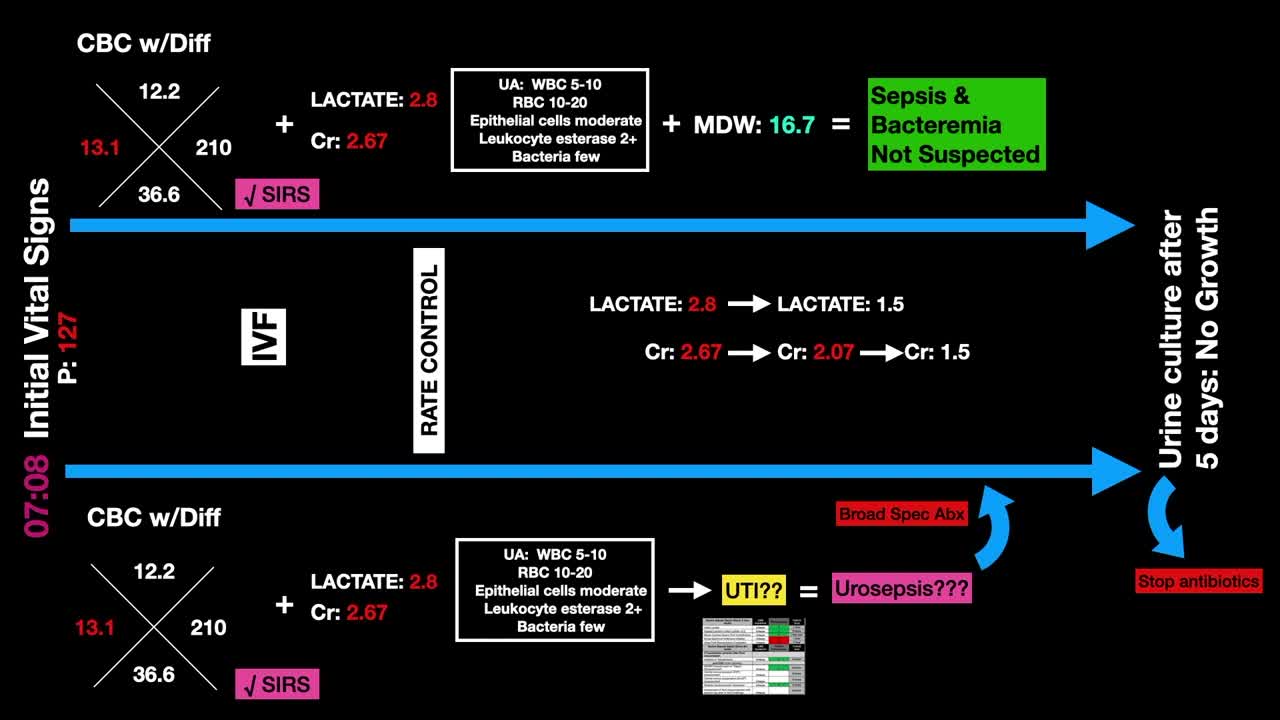Patient arrives at ED
A 63-year-old male with a history of prostate cancer and use of a suprapubic catheter presents to the emergency department (ED).
Over the past 24 hr, the patient has experienced two episodes of vomiting along with mild periumbilical pain, generalized weakness, nausea and decreased appetite. He denies fever or chills, shortness of breath, or chest pain.
7:08 a.m.
Initial assessment
Mildly dry mucous membranes, mild TTP of the periumbilical region, tachycardic and irregular rhythm.
T: 37.4 (99.3 F) | BP: 122/91 | P: 127 | RR: 21 | SpO2: 97% (RA)
The vitals assessed were normal except for an elevated pulse rate of 127 BPM.
7:35 a.m.
EKG is performed
Patient’s EKG showed atrial fibrillation with a rapid ventricular rate (RVR) at 130.
8:10 a.m.
CBC with Differential and MDW results returned
The white blood cell (WBC) results come back elevated at 13.1, but the MDW is normal at 16.7 normal (less than 20 cut off).
8:35 a.m.
Basal Metabolic Panel (BMP) results obtained
Creatinine level of 2.67, increased from creatinine level of 1.03 last month.
Lactate elevated at 2.8.
8:38 a.m.
Cardiac markers returned
Both Troponin and BNP were normal.
8:55 AM
Chest X-ray resulted
Chest X-ray showed no acute findings.
9:35 a.m.
Urinalysis (UA) results returned
WBC 5-10 | RBC 10-20 | Epithelial Cells = Moderate | Leukocyte esterase = 2+ | Few bacteria
Results suggested a possible urinary tract infection (UTI).
 English
English


